Global STEM Workforce: Science National Academies Members
A recent study conducted by GenderInSITE (Gender in Science, Innovation, Technology, and Engineering) in collaboration with the InterAcademy Partnership (IAP) and the International Science Council (ISC) was published in September 2021. This report included results from two global surveys. Over 120 national science academies and disciplinary associations worldwide participated in the surveys and reported on women’s science participation. The report found that women’s representation remained low from 2015 to 2020 across various countries in the world. Specifically, in the U.S., while women’s representation in the National Academy of Sciences has increased from 13% to 19%, women still comprise less than one-fifth of members of this academy.
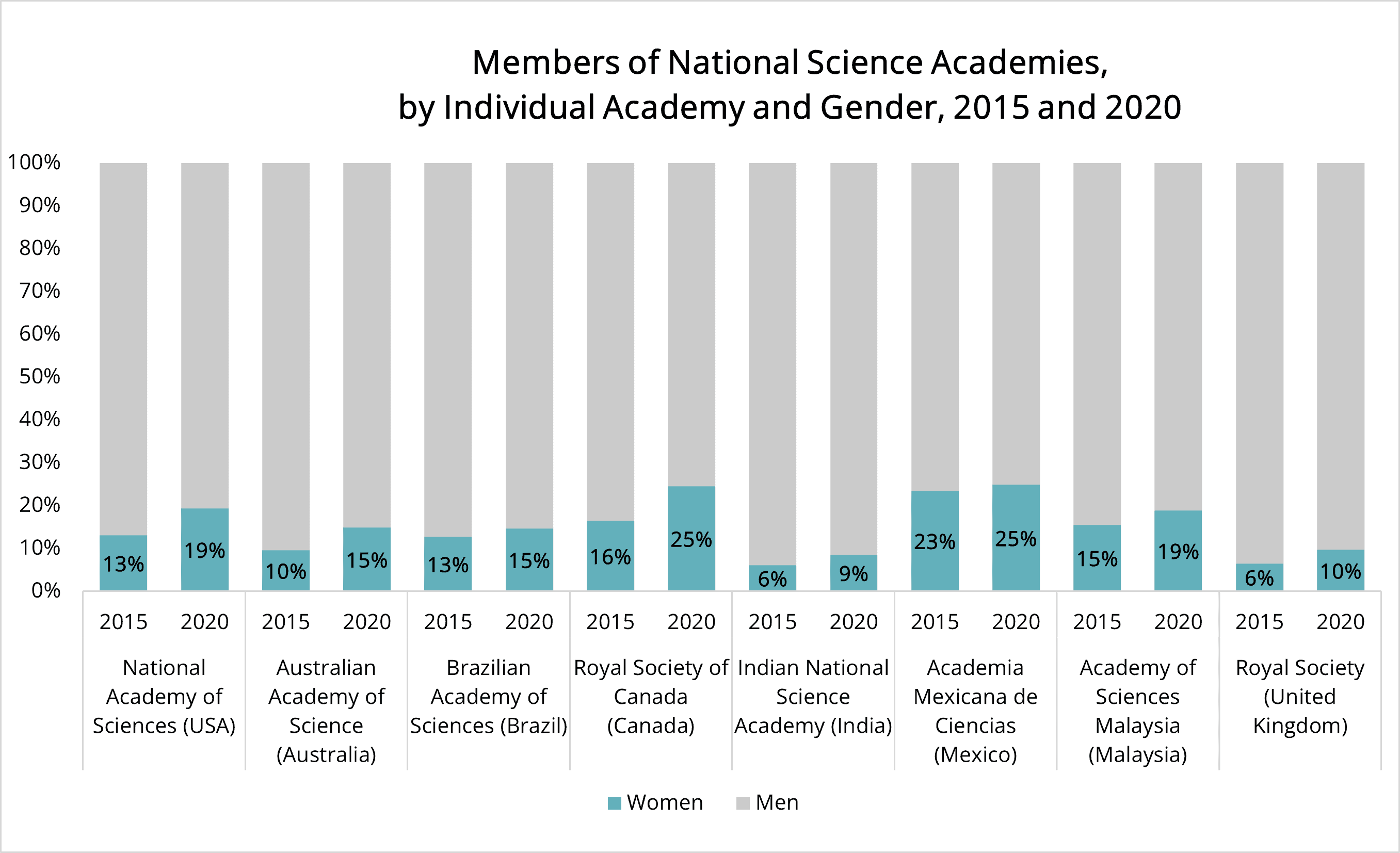
Despite the low representation of women among academy membership, women fare better among those who govern the academies themselves. That is, women comprise 23% to 59% of the governing body across national academies of sciences in the world. For example, while the National Academy of Sciences in the United States has 17 individuals in its governing body, more than half (59%) of them are women. Similarly, women comprise the majority of the governing body of the Royal Society of Canada. However, women still represent less than half of the governing in most other countries, including Australia, Brazil, Malaysia, Mexico, and the United Kingdom.
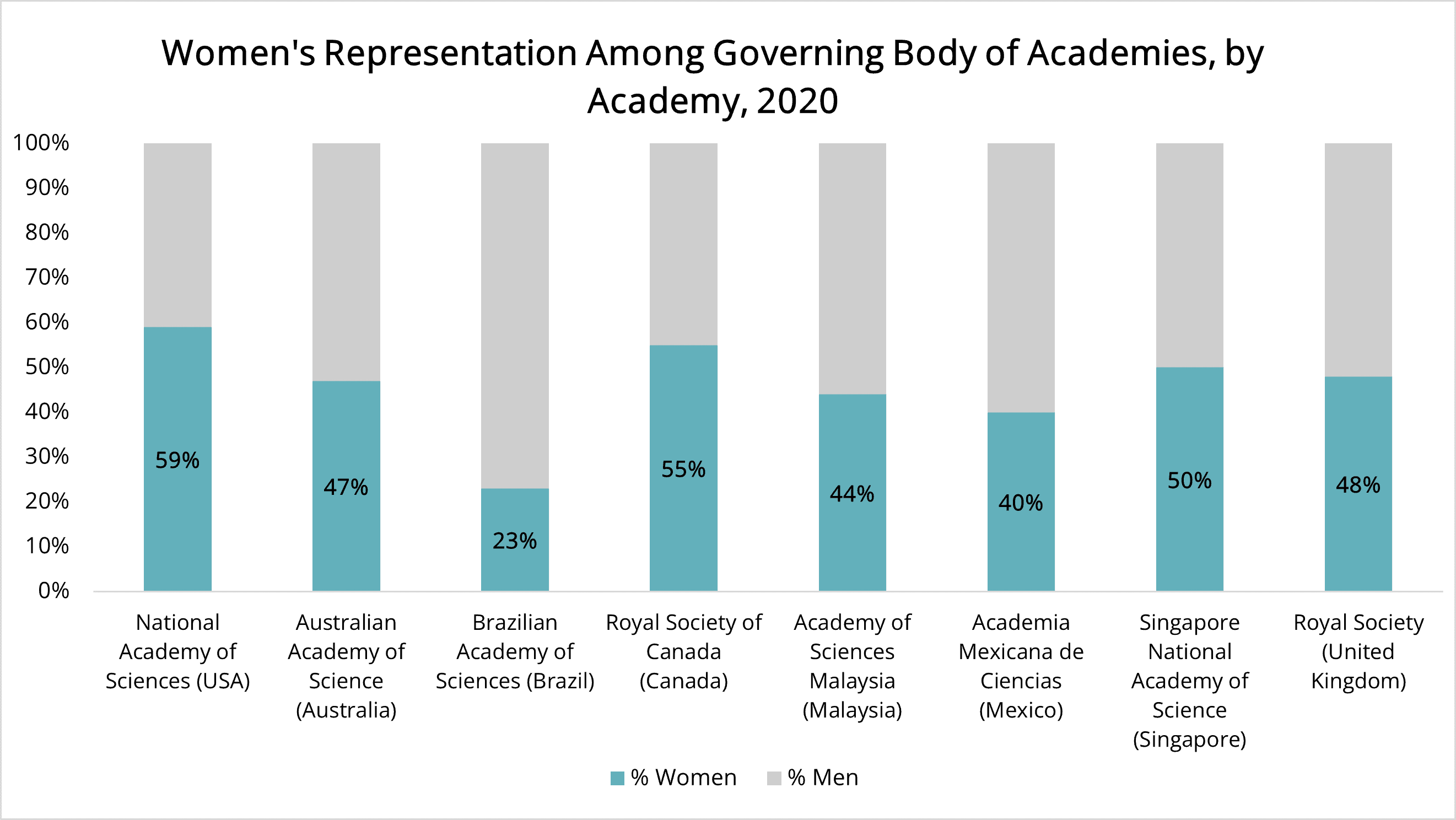
Global STEM R&D Researchers and Personnel
In 2020, the percentage of women science and engineering researchers and personnel in research and development (R&D) professions worldwide was about 31%, according to a UNESCO brief report (UNESCO, 2023), highlighting a gender disparity in the R&D labor force. Still, there are regions in the world with almost gender parity among R&D researchers. For instance, women in Central Asia represent 49.6% of R&D researchers, while women in Latin America and the Caribbean comprise 44.2% of the R&D workforce. However, gender imbalance is abysmal in other regions in the world, including East Asia and the Pacific and South and West Asia, where women represent 26.7% and 24.3% of the R&D personnel, respectively.
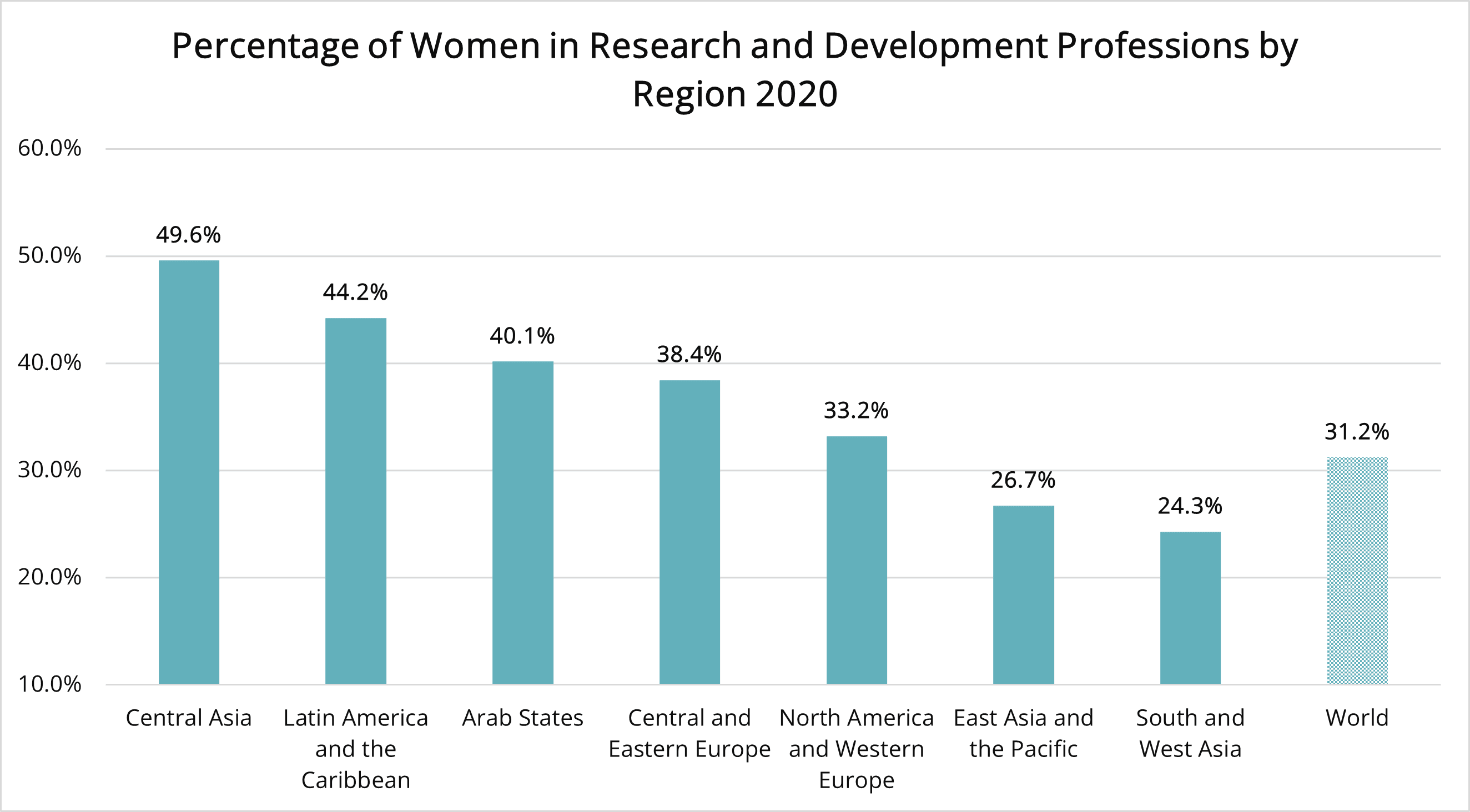
Examining the R&D personnel of selected countries by gender also reveals women’s underrepresentation in this workforce. Among the selected countries, India has the lowest female representation, where less than 16.6% of R&D personnel were women in 2018. Spain is the country closest to achieving parity, with 41.3% of its researchers identifying as women.
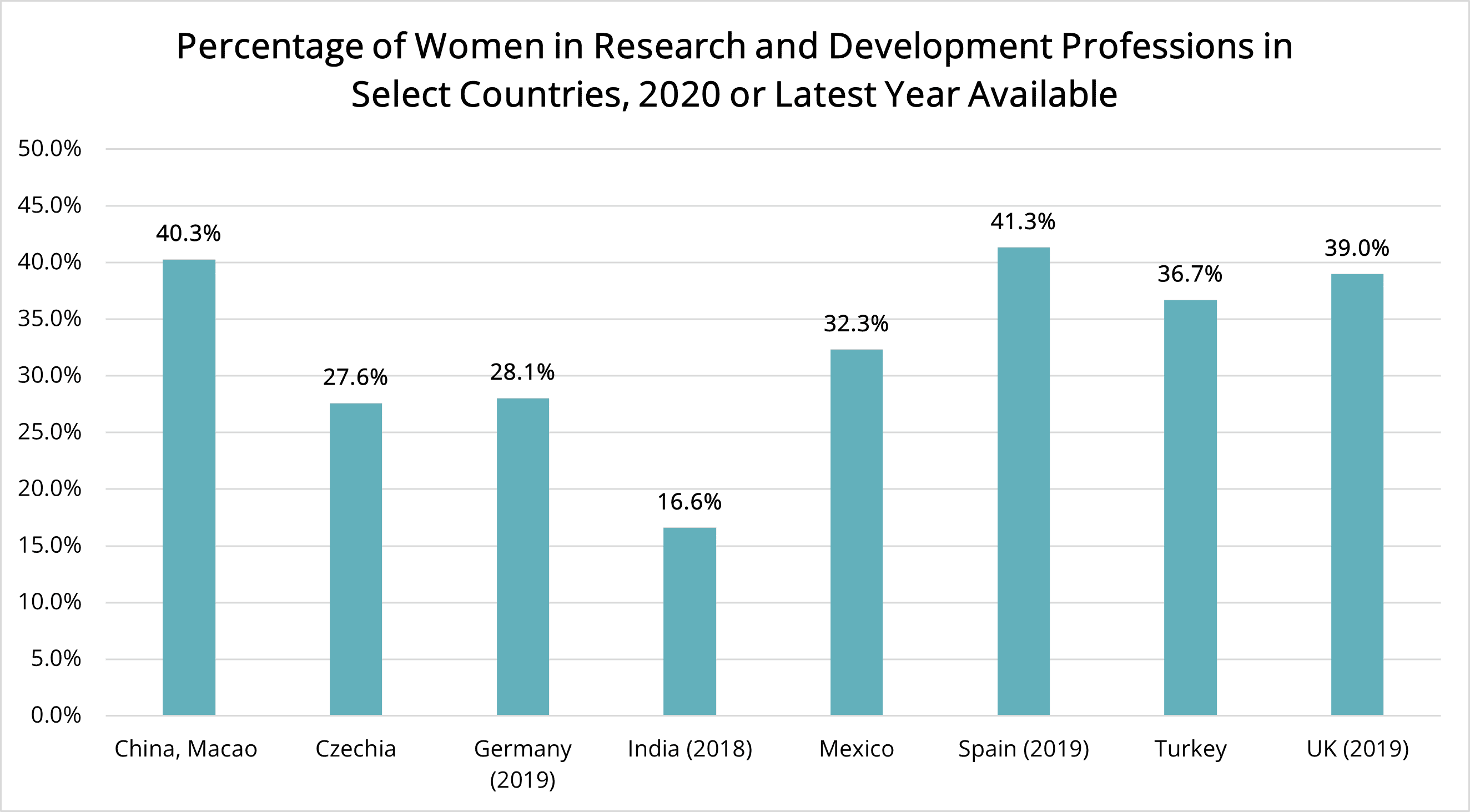
Global STEM Workforce in Frontier Roles
The World Economic Forum’s Global Gender Gap Report 2021 (World Economic Forum, 2021) provided an update on the gender gap in frontier roles and frontier skills, as observed in data from the LinkedIn platform. These professional clusters* were identified as those with increasing employment projections from across 20 leading economies. Overall, women’s representation increased slightly across most professional clusters, except the People and Culture cluster. For example, their representation among those in Engineering and Data and AI increased from 15% to 20% and 26% to 32%, respectively. While their representation among professionals in the People and Culture cluster decreased slightly from 65% in 2020 to 61% in 2021, they remain over-represented among professionals in these roles. Additionally, women in professional and technical roles represent 61% of those in Content Production, 44% in Marketing, 37% in Product Development, and 14% in Cloud Computing.
* The professional clusters were determined based on similar skill sets required.
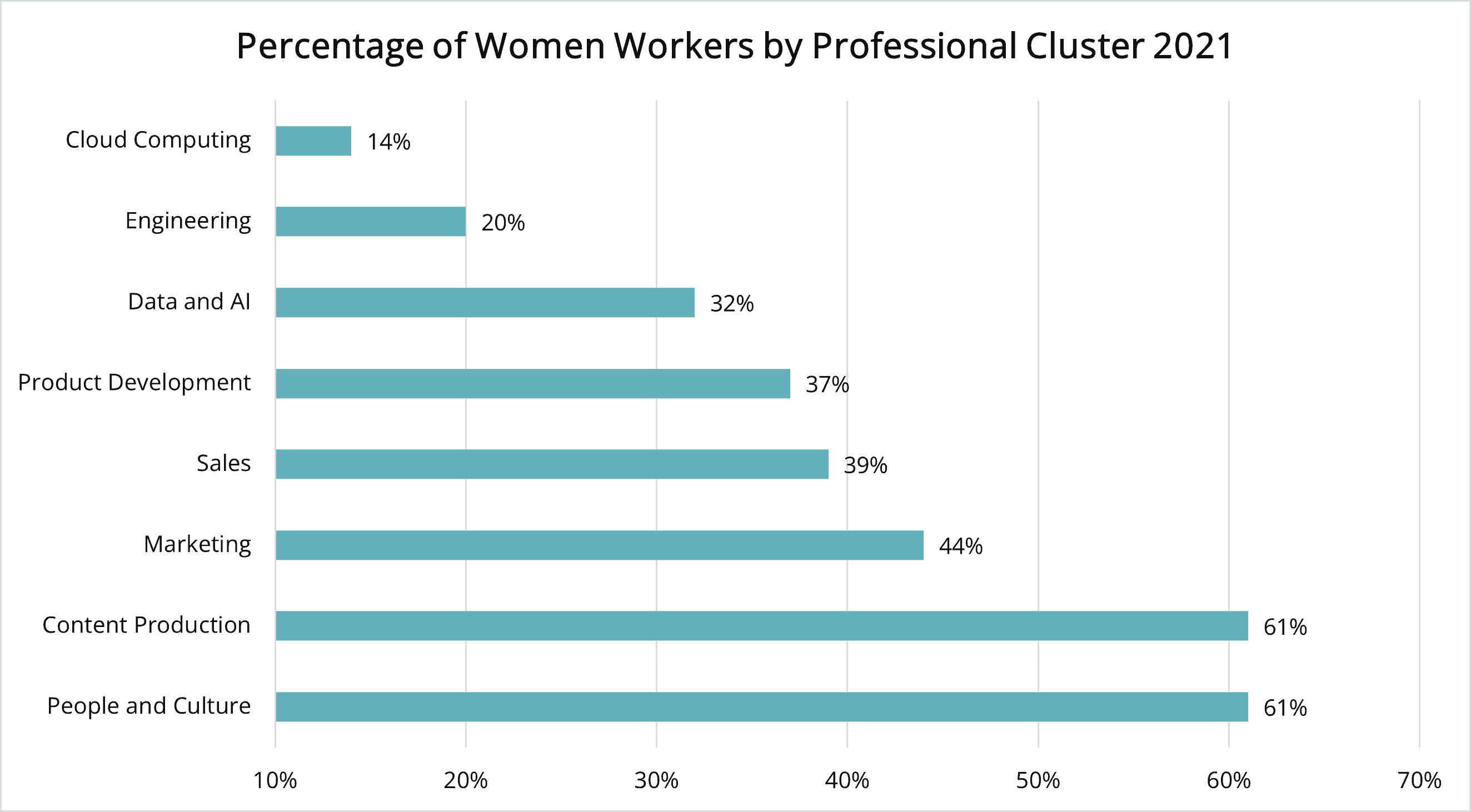
Moreover, in selected countries, women comprise less than a quarter of all workers in cloud computing and engineering jobs. In all, 39% of all jobs held, as reported in the LinkedIn platform, were held by women; however, women represent only 12% and 15% of the workers in cloud computing and engineering occupations, respectively. The United States does have slightly higher proportions of women in cloud computing (14%) and engineering (23%) jobs, which may mirror the overall higher percentage of all (47%) jobs held by women. Still, Canada (16%), Australia (19%), and India (20%) also stand out for having slightly higher female representation in engineering occupations.
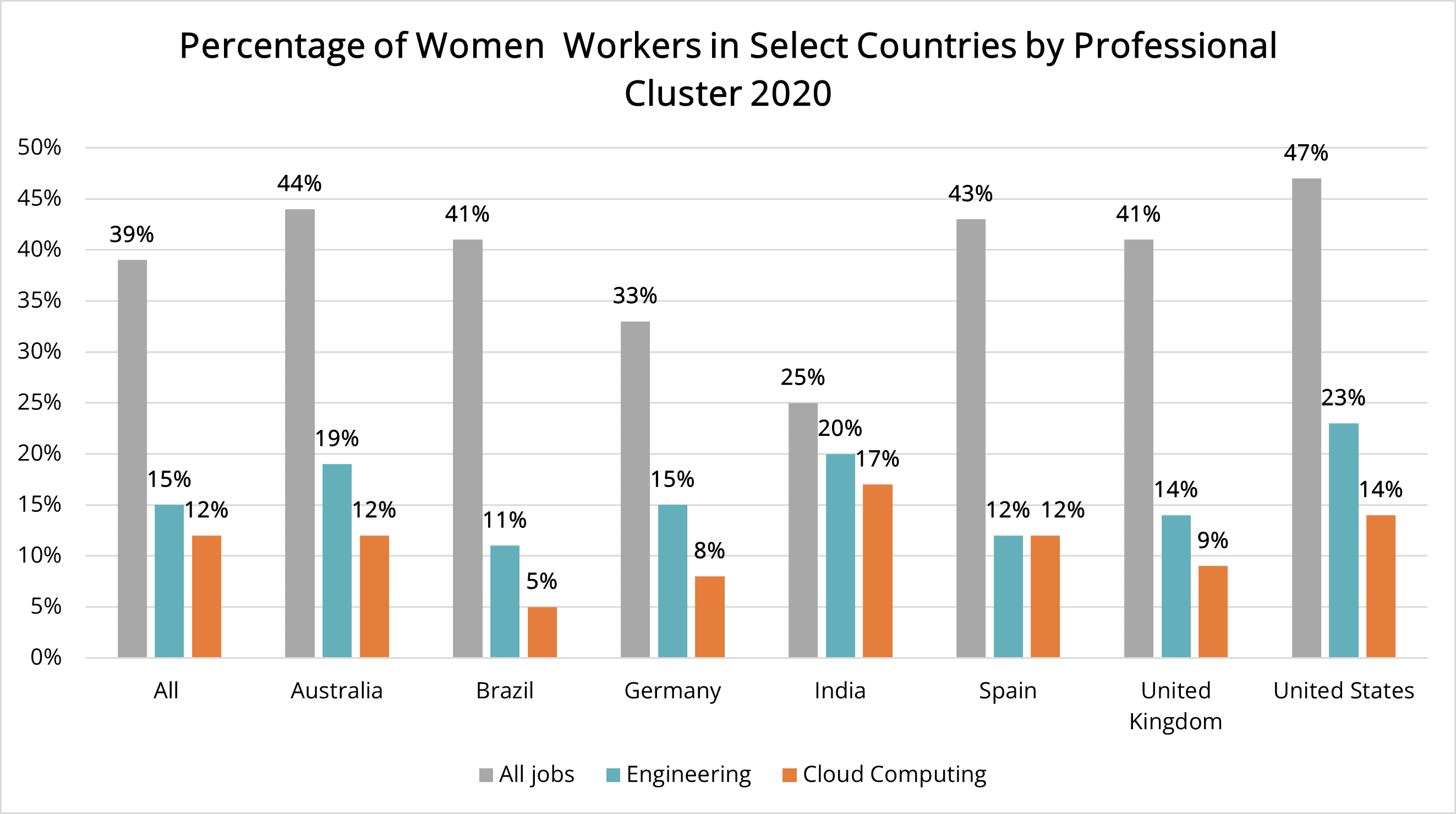
The global underrepresentation of women in STEM (Science, Technology, Engineering, and Mathematics) is a concerning issue. According to the Global Gender Gap Report (2023), women comprise only 29.2 % of the STEM workforce in 146 nations evaluated, compared to nearly 50 % of non-STEM occupations. Despite a 1.58% increase in STEM female workers between 2015 and 2023, a troubling gender imbalance remains. Women face challenges when pursuing STEM leadership roles. For instance, women represent 29.9% of senior workers but only 12.4% in C-suite roles. Organizations, governments, educational institutions, and the larger scientific and technological community must work together to remove barriers that prevent women from advancing in STEM careers.
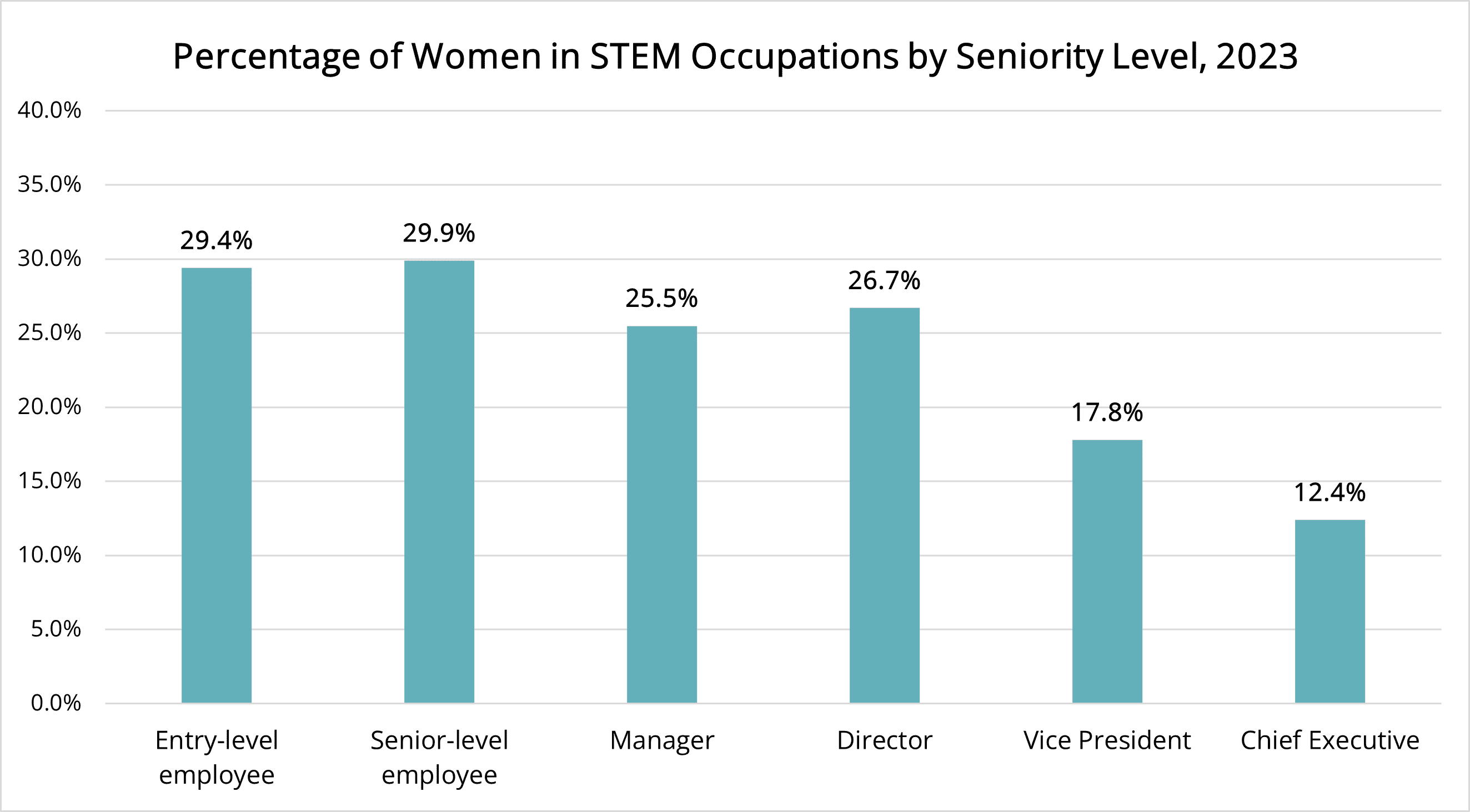
Additional Resources
-
- GenderInSITE. (2021). Gender Equality in Science.
- The UNESCO Institute for Statistics (2023). Other policy relevant R&D indicators: Female researchers as a percentage of total researchers
- World Economic Forum, Global Gender Gap Report 2022.
- World Economic Forum, Global Gender Gap Report 2023